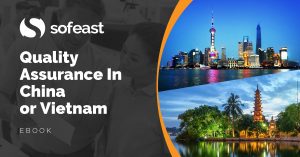 I am reading The Rise Of The New East: Business Strategies For An Increasingly Complex World by Ben Simpfendorfer, a consultant and economist based in Hong Kong.
I am reading The Rise Of The New East: Business Strategies For An Increasingly Complex World by Ben Simpfendorfer, a consultant and economist based in Hong Kong.
This book explores the region’s growing commercial opportunities and complexities. It deals with “the East”, a wide area starting in Egypt and ending in China.
I thought it might be interesting to reproduce some comments by Richard Thomas, head of sourcing for the Far East region at Marks & Spencer. He explains what drives his company to select new sourcing countries:
Thomas emphasizes that cost only partly explains the changes in the industry. “Sure, it plays a role. But it’s also about balancing your portfolio. You need to source in countries with duty-free access to Europe or even local markets here in the region. You need to re-risk from countries with labor shortages. You need to dual-source some products,” he says. “It’s all these pressures that force change and so while we source one-third of our goods from China, we’ve also gone into Vietnam, Cambodia, and Bangladesh, and we’re looking at new opportunities in Myanmar and Pakistan.”
Factory migration also has its limits. “We are also increasingly focused on efficiencies in the markets we are already in,” he emphasizes. “It is critical we maintain leading standards of ethics and quality. We are absolutely committed to the company’s sustainability program, Plan A, especially when entering new markets.”
Marks & Spencer purchases mostly textile products from those countries. They are known for making smart decisions, and for helping the key manufacturers they work with to improve their quality and efficiency.
If you have an interest in reading about the latest trends, I encourage you to read Ben’s book. It is well written, full of examples and anecdotes, and very easy to read.
Get expert help to improve YOUR product quality from suppliers in China or Vietnam. Read: Quality Assurance In China Or Vietnam For Beginners
Grab your free copy of Sofeast’s eBook and learn the common traps new importers from China or Vietnam fall into, and how to avoid or overcome them in order to get the best possible production results. It also outlines a proven quality assurance strategy that you can follow in order to have better control over your product quality, covering:
- Finding Suitable Suppliers
- Defining your Requirements before Production Starts
- Don’t Skip the New Product Introduction Process
- Regular Quality Inspections (Trust but Verify)
- Tying Payments to Quality Approvals
Sounds good? Hit the button below to get your copy now:

